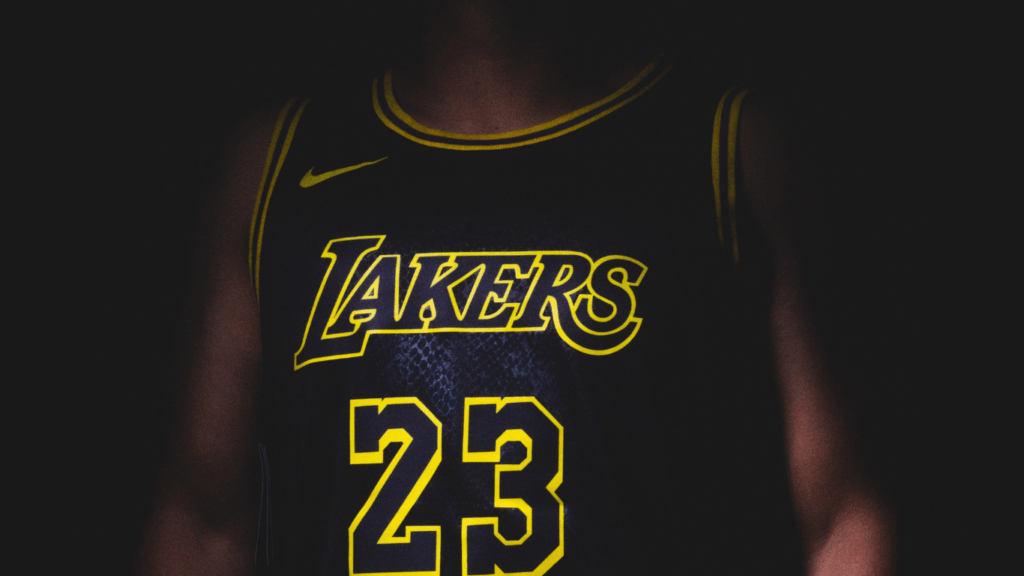The Evolution Of Sponsorship Deals In Sports
Sports sponsorships began as simple logo placements on jerseys. In the 1970s, brands such as Adidas and Nike saw potential in aligning with sports teams. This basic yet impactful strategy expanded globally. The 1984 Los Angeles Olympics set a new standard with exclusive sponsorship deals. Companies like Coca-Cola and McDonald’s drove brand visibility, connecting with international audiences.
In the 1990s, digital media changed the landscape. Brands began leveraging TV and internet platforms to maximize reach. For instance, Nike’s endorsement of Michael Jordan elevated both the athlete and the brand. This era introduced personalized marketing strategies, pairing brands with athletes who matched their values.
The 2000s saw sponsorships integrating social media. Platforms like Facebook and Twitter offered direct engagement with fans. Brands like Red Bull mastered this by creating content and experiences, not just ads. They sponsored extreme sports events, producing viral moments that reinforced their image.
Today, sponsorship deals encompass multi-channel strategies. Brands target niche markets using detailed data analytics. They create tailored campaigns, leveraging influencers and real-time engagement. For example, Puma’s partnership with Usain Bolt includes social media exclusives, interactive fan experiences, and limited-edition products.
Sponsorships have evolved into complex, symbiotic relationships. Brands and sports entities co-create content, striving for genuine connections. This evolution signifies a shift from mere visibility to immersive brand experiences, shaping modern sports marketing.
Key Elements Of Effective Sports Sponsorships
Effective sports sponsorships involve strategic elements that optimize brand relationships and fan experiences. I’ll detail the primary factors contributing to successful sponsorships.
Brand Alignment
Aligning a sponsor’s brand with the right sports property is crucial. When a brand’s values, image, and target audience match that of the sports entity, it creates a cohesive partnership. For instance, Nike’s collaboration with professional athletes highlights performance and innovation, matching its brand identity. This alignment ensures that promotional activities resonate authentically with fans.
Audience Engagement
Engaging the audience is essential in modern sponsorships. Interactive campaigns, social media activities, and in-person experiences enhance fan connection. Brands like Red Bull leverage extreme sports events to engage their target demographic directly, providing thrilling content and hands-on experiences. Such engagement fosters deeper emotional connections and brand loyalty.
Financial Impact
Assessing the financial impact of sponsorships determines their effectiveness. Sponsorship deals often vary in value; a multi-million dollar deal can significantly boost a sports entity’s budget, allowing for talent acquisition and infrastructure improvements. For brands, these partnerships can lead to increased sales and market share. Analyzing ROI through metrics like:
- brand awareness
- sales data
- fan engagement
helps in measuring financial success. By strategically focusing on these elements, sponsorship deals can effectively shape sports marketing, creating mutually beneficial outcomes for both brands and sports entities.
Case Studies Of Successful Sponsorships

Examining specific instances offers insight into how sponsorship deals can transform sports marketing.
Major League Sports
Pepsi and the NFL have maintained a long-standing partnership, leveraging the visibility of Super Bowl events. Pepsi’s association with the NFL spans over three decades. The annual Pepsi Super Bowl Halftime Show becomes a pivotal marketing element. This partnership showcases how consistent branding and exclusive events captivate large audiences.
Adidas and the NBA illustrate another successful venture. Adidas secured an exclusive apparel deal with the NBA in 2006, lasting until 2017. This deal focused on merging sports and fashion, appealing to diverse demographics. Adidas utilized player endorsements to create a strong market presence, further boosted by product placement during games.
Olympic Games
Coca-Cola’s alliance with the Olympics began in 1928, marking one of the longest partnerships in sports history. Coca-Cola leverages global outreach by connecting with audiences across 200+ countries. Sponsorship includes brand integration into Olympic Torch Relay and athlete endorsements, creating a rich narrative of unity and celebration.
Samsung’s involvement in the 2012 London Olympics aimed to showcase technological innovations. Samsung launched the Galaxy S3 during the event, integrating it into various Olympic activities. The “Samsung Global Blogger” campaign allowed fans to share experiences, merging technology with sports enthusiasm.
Emerging Markets
HSBC’s sponsorship of the World Rugby Sevens Series highlights opportunities in emerging markets. Rugby Sevens has seen growth in regions like Asia and Africa. HSBC capitalizes on this by engaging local fans through grassroots programs. This strategy strengthens brand association with community development and sports accessibility.
Alibaba’s partnership with the International Olympic Committee (IOC) signifies a move into digital expertise. Beginning in 2017, the deal focuses on cloud computing and e-commerce. Alibaba ensures streamlined digital experiences for fans worldwide. This collaboration showcases the potential of tech companies investing in sports sponsorships.
These case studies exemplify varied strategies in sports marketing, emphasizing the transformative power of well-executed sponsorship deals.
Challenges And Considerations
Sponsorship deals in sports marketing face several challenges that require careful consideration. Navigating these obstacles effectively is crucial for maximizing the benefits of these partnerships.
Ethical Concerns
Ethical concerns in sponsorship deals can impact brand reputation and fan trust. Some companies, for instance, have faced backlash for aligning with athletes or teams entangled in controversies. Due diligence is necessary when selecting partners, considering both current and potential future issues. Maintaining transparency in contract terms helps foster trust. Sponsors and sports entities should publicly disclose the nature of their collaborations to avoid allegations of hidden agendas or conflicts of interest.
Market Saturation
Market saturation poses a significant challenge as sports sponsorships become more popular. Overcrowding in advertising spaces, such as stadiums, jerseys, and digital platforms, dilutes brand messaging. Fans overwhelmed by constant brand exposure may become desensitized, reducing the effectiveness of sponsorship deals. Brands must innovate to stand out, employing unique engagement strategies like exclusive content or experiential marketing to capture and maintain fan interest. Avoiding reliance on traditional advertising spaces can also lessen the impact of saturation.
Future Trends In Sports Sponsorships
Rapid technological advancements are reshaping sports sponsorships. The integration of Augmented Reality (AR) and Virtual Reality (VR) offers fans immersive experiences, enhancing engagement and creating unique value for brands. For example, AR apps enable fans to interact with their favorite athletes during live events.
Data analytics is another crucial trend. Detailed fan data allows brands to create personalized marketing campaigns. By analyzing fan behavior, brands can tailor content to specific demographics, improving relevance and engagement.
Furthermore, sustainability is increasingly important in sports sponsorships. Brands are aligning with sports entities to promote eco-friendly initiatives. As environmental awareness grows, partnerships that emphasize sustainability attract both fans and positive media attention. For instance, Adidas’s commitment to producing eco-friendly sportswear resonates well with environmentally-conscious fans.
Social media continues to play a vital role. Influencer partnerships and user-generated content keep fans engaged. Athletes often serve as influencers, promoting sponsored content directly to their followers. Moreover, brands use platforms like Instagram and TikTok to launch interactive campaigns, fostering community participation and loyalty.
Lastly, brands are exploring emerging markets to expand their footprint. Sponsorship deals are focusing on regions like Asia and Africa, where sports like cricket and soccer are immensely popular. Engaging these new audiences offers vast opportunities for brand growth and visibility.
| Trend | Examples | Impact |
|---|---|---|
| AR and VR | AR apps for live interaction with athletes | Enhanced fan engagement and unique brand value |
| Data Analytics | Tailored campaigns based on fan behavior | Increased campaign relevance and engagement |
| Sustainability | Adidas’s eco-friendly sportswear | Positive media attention and eco-conscious fan base |
| Social Media | Influencer partnerships and interactive Instagram campaigns | Increased fan participation and brand loyalty |
| Emerging Markets | Sponsorships in Asia and Africa | Expanded brand footprint and new audience reach |
Rapid advancements in technology and a focus on personalization are driving these trends. By keeping pace with innovations, brands and sports entities can create impactful, memorable sponsorship deals.



